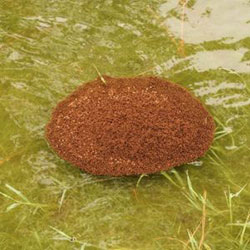What is the Effect of Hurricanes on Wildlife?

Photo courtesy of Bill Willis
By Bill Willis and Bill Steinmetz
November 27, 2017
- Hurricanes affect all life forms in the impact zone, some more than others
- Habitat loss may permanently eliminate a species from the area+
- Nature is resilient and typically rebounds quickly, but not always
Thankfully, the 2017 hurricane season is over. Hurricanes this year alone have taken an extreme toll on human life and property. You only have to see pictures of the Gulf Coast, Florida, or Puerto Rica to get a sense of the devastation these areas have suffered. However, there can also be direct and indirect impacts on animals, plants, and the natural world.
Several years ago, USA Today featured the effects that several of the hurricanes have had on North American wildlife. Researchers have grouped the effects of hurricanes on wildlife into seven major areas. Hurricane affects come from both wind and water impacts.
- Wind and waves break coral, damaging it or forcing it on shore and disrupting the ocean ecosystem. Fish and benthic organisms face turbulent conditions due to waves and wind.
- Dunes and beaches lose stabilizing plants and sand, displacing dune nesting birds and their nests.
- Saltwater intrusion from the storm surge covers the land and freshwater lakes, changing the salinity, subjecting plants and animals to brackish conditions.
- Freshwater flooding from accompanying rains causes additional flooding and decreased salinity, subjecting plants and animals to freshwater conditions.
- Turbidity from sediment and pollution due to back and forth water movement and runoff impacts entire coastal habitats
- Winds dislocate sea and migratory birds caught in the eye of the storm.
- Tree Loss, if major, affects nesting sites (cavities) as well as food sources for birds and mammals.

Photo courtesy of Brant Kelly/Flickr
Even if the plant or animal can escape the direct effect of wind and water on its home range, the organism still has to cope with changes in habitat or location. Highly visible species like migratory birds, deer, rabbits, squirrels, and turkeys may be forced well inland or carried out to sea.
Long Term Habitat Impact
Although heavy habitat losses may occur initially, most populations that live in the storm zone will survive and reestablish the area eventually. While native species will be part of that recovery, exotics and invasives may also spread. Changing habitats may also lead to shifting ecosystems; a thinned tree canopy may promote herbaceous growth on the forest floor, which could lead to introduction of new animals more suited to the new growth on the forest floor.



